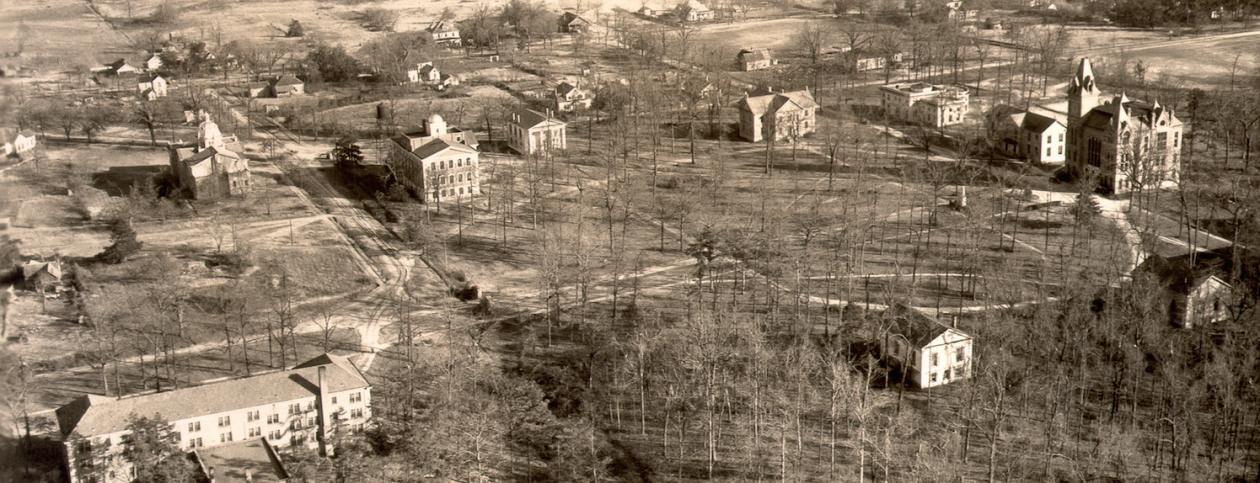Stanford professor David F. Labaree, a social historian who writes about education, has published a short and engaging book about American higher education. He sums up his take on the industry with the book’s title–“A Perfect Mess” (University of Chicago Press, 2017). His thesis is that the rise of American colleges and universities to a position of dominance in the ranks of the best in the world could not have been predicted in the nineteenth century. True, by 1880 the US had five times as many higher ed institutions as all of Europe, and Ohio alone had three times as many as the UK. Yet these American colleges held about as much promise of triumph as a go-cart at the Indy 500.
Unsurprisingly, the story of most American colleges through the nineteenth century sounds like much of the history of Emory back then. Scores of small colleges founded by religious denominations were isolated in rural areas or tiny towns. Presidents and faculty members wrestled with a constant shortage of funds and relatively small enrollments. The faculty often were clergy first and scholars second, many of them having attained little more than a BA degree and rarely a doctorate. As many as half the students failed to graduate, not necessarily for want of brains but for the need to earn a living as farmers, merchants, or even professionals in work that required less formal education in those days (law and ministry especially).
The location of Emory College in little Oxford, Georgia, and then the establishment of Emory University in Atlanta underscore two observations Labaree makes.
The first observation is that the founders of the liberal arts colleges in the nineteenth century often chose rural areas or small towns for their schools out of a belief in republican (small r) values–the integrity and individualism of the small landholder, the family-like ethos of community, the nurturing of civic and religious habits, and a suspicion of the corrupting influence of commercial centers in large cities.
All of these principles seem to have motivated the founders of Emory College, who not only set their college two miles from the center of Covington but also created a new town as a buffer against intruding vices. (Initially each residential lot in the college’s town, Oxford, was offered on a lease of 999 years, with stipulations that the lease would be forfeit if the property were used for games of chance or selling of “spirits.”)
Labaree’s second observation, though, points to a curious and often-unremarked-upon fact about the location of Emory University. He comments that many nineteenth-century colleges were founded by civic boosters who wanted to increase the value of their property. “Settle in East Podunk–we have a college!” I think something of that strategy was at work in Asa Candler in 1914.
By 1914, when the Methodist Episcopal Church, South, was looking for the site for a new university, wariness of city vices still persisted among many Emory supporters, and they made a strong case for keeping the college at Oxford while allowing the university’s new professional schools to take advantage of access to lawyers, doctors, business leaders, and clergy in the city. In the end, the trustees thought it made more sense to have the college and the professional schools on the same campus in Atlanta.
Curiously, though, that campus in Atlanta began with seventy-five acres that Asa Candler carved out of his suburban development in Druid Hills. What better way to ensure the marketability of his massive real estate plan than to carve a bucolic university campus from the woods and fields right next door?
This is not to minimize Candler’s genuine philanthropic impulse or his indispensable largess. But his biographers have always noted that his deep and extended civic engagement with Atlanta, as well as his commitments to church and university, never diminished or got in the way of his always-functioning business savvy. He was ever, in the apt title of Kathryn W. Kemp’s book about him, “God’s capitalist.”
Gary Hauk

Well done, my dear friend.
LikeLike
Thanks, Robert. It’s good to know you’re in the audience!
LikeLike
And it is interesting to note (or to conjecture) how, had Emory not moved to Atlanta, it might have remained “in place” as a small liberal-arts college (cf. Oglethorpe, Sewanee, Rhodes, Agnes Scott) instead of being, as it now is, a major research university, thereby losing over time the centrality of its religious self-definition and taking on the identity of an intellectual, scientific and secular institution.
LikeLike
Thanks, Bill, for this perspicacious additional observation. The hypothetical – what if Emory College had stayed in Oxford – may be suggested in part by the different feel and ethos of the Oxford campus even today: the emphasis on teaching rather than research; the stronger sense of gemeinschaft over gesellschaft; and maybe even a more pervasive religious life, though one decidedly broader than the Christianity of the early twentieth century (the Emory Muslim Student Association had its birth on the Oxford campus).
LikeLike